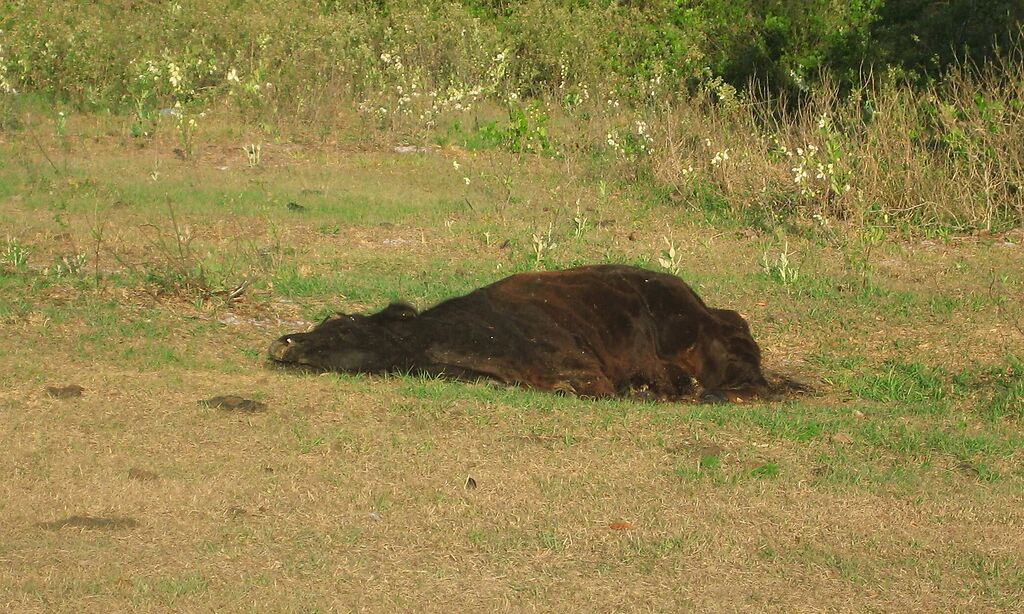For those who do not have experience on farms, it makes sense to wonder what farmers do with dead animals. Of course, some animals on a farm will likely be intentionally slaughtered for food, whether to sell as food or for the farmers and their families to eat themselves in the case of smaller farms. But what about the animals that die of unintentional consequences? There are a few different methods that farmers may use, with some being more common in certain regions than others.
Healthy Dead Animals
In the case of a dead farm animal that was otherwise healthy but died from an accident or other unusual situation, they may be used in the same way as any farm animal that was intentionally killed. In other words, they may be butchered, or at least whatever portion of the animal that is still usable can be butchered.
Donate Them to Science
Depending on the farm and the circumstances surrounding the animal’s death, the farmer may donate or even sell them to a scientific facility. Dead animals can be used for research in universities and scientific facilities. Farmers who are close to vet schools, in particular, can take advantage of this option as the dead animals can be used to train future vets.
Donate Them to Zoos
If the dead animal was relatively healthy and does not have any medications in its system, then local zoos will frequently accept the dead animal. This can be a great way for zoos to keep the cost of feeding their carnivorous animals down.

Bury the Animals
It is also common for farmers to buy dead animals. This is typically done to a certain depth, as that helps ensure that that the carcass will not be dug up. In some situations, the county may even provide assistance, such as sending a backhoe to dig the hole for the farmer.
Burying the animals requires a great deal of care, however. After all, farmers need to make sure that the hole is deep enough so scavengers do not dig it up but high enough so it does not affect the water table. Because of these risks, not everywhere allows farmers to bury dead animals.
Burn the Animals
Some farmers will also burn the dead animals. This is usually done inside an open pit that uses fossil coal, charcoal, or wood. This is one of the disposal methods that is not legal in all areas and may come with some heavy restrictions depending on where you are.
A related alternative is to have the dead animals cremated, but that tends to have higher out of pocket expenses for the farmer than other methods on this list.
Render the Animals
Rendering refers to breaking down the dead animal into various usable bits. In the past, rendering plants would buy dead animals from farmers, but over the years, this shifted to being a free service and now it frequently requires farmers to pay for the service. Because of the new structure requiring payment, farmers are less likely to use rendering plants than they used to be.
Another problem with using a rendering service, even if farmers want to spend the money on the disposal, is the limitations. For example, many rendering services will not accept cattle that are more than a few years old due to the risk of mad cow disease. The 2008 outbreak changed the officially recommended protocol from the FDA, encouraging the renderers not to accept adult cows.
Some farmers may still choose to render the animal to some extent themselves, then use one of the other methods mentioned. For example, you can make bone meal that is used for fertilizer. Flesh and hide can be used for leather or fertilizer.

Compost the Animals
Composting is an option of disposing of dead farm animals that is growing in popularity, although it requires a great deal of care. There is time and labor involved and farmers have to be sure that they do not accidentally affect the groundwater or runoff. There are also CAFO regulation to follow.
When done correctly, however, composting is a great way to make use of the dead animal for future use. This method of disposal means that every single part of the dead animal is reused. Composting the animals can involve using clean wood chips or shavings, sawdust, straw, clean silage or hay, poultry litter, or a mixture with livestock manure.
Haul Them for Scavengers
Some farmers opt to leave the dead animals for scavengers like buzzards and coyotes. Between those animals and the rest of nature, all of the dead animal’s parts will be used. Additionally, this is completely free.
If they go this route, farmers will typically take the dead animal to the edge of their property to avoid attracting scavengers or foul odors to the areas they commonly use.
